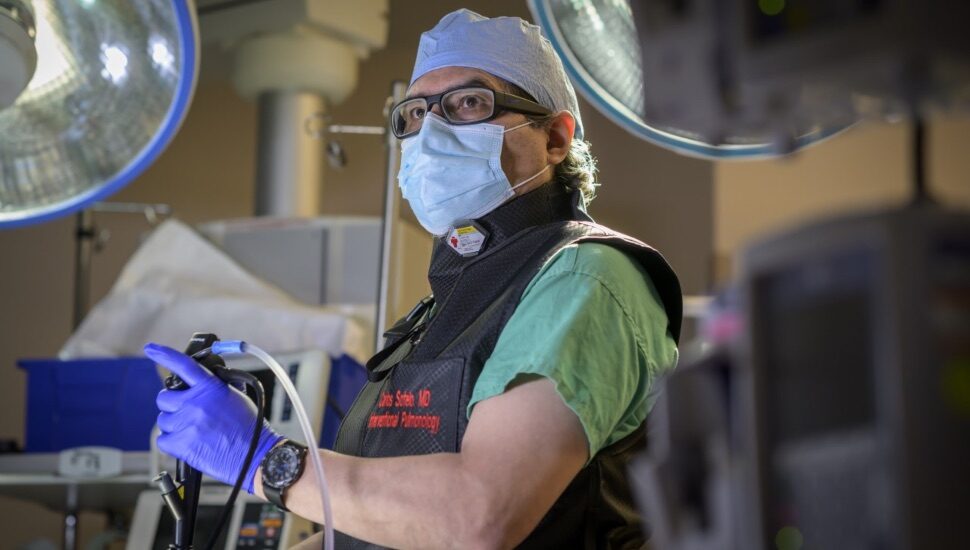Doylestown Hospital Introduces Minimally Invasive Technology to Diagnose Lung Cancer

Lung cancer is the leading cause of cancer deaths. But when diagnosed at the earliest stage, known as stage IA-1, the average five-year survival rate is 92%, according to a study in the journal Chest. Time matters. The earlier a lung cancer is diagnosed, the better the treatment results and potential for a cure.
Early-stage lung cancer can be challenging to diagnose because the tissue samples need to come from hard-to-reach areas deep within the lung, where biopsy with traditional technologies will likely fail. As an answer, Doylestown Hospital is the first hospital in our region to bring a novel minimally invasive robotic-assisted bronchoscopy procedure to reach smaller, earlier-stage nodules.
Called the Ion Endoluminal System (manufactured by Intuitive), it is a robotic-assisted platform that features a thin, moveable catheter and allows navigation far into the peripheral lung, reaching smaller nodules and allowing for more precise biopsies. Because of its precision, Ion also helps patients avoid subsequent biopsies.
During bronchoscopy with Ion, the physician uses a controller to navigate a camera-equipped catheter to the target along a computer-generated path. The catheter can move 180° in any direction to pass through small, difficult-to-navigate airways and around tight bends to reach all 18 segments of the lung.
Once the catheter reaches the lung nodule, a flexible biopsy needle and other biopsy instruments pass through it, even when positioned in twisted airways. Then, the biopsy instruments deploy into the target location on a straight path to obtain lung biopsies.
The technology allows physicians to locate, biopsy, and mark nodules for surgical resection in one procedure.
“Robotic bronchoscopy is a novel technology introduced in 2018 and has revolutionized our approach to small, peripheral lung nodules, making them much more reachable. At Doylestown Hospital, we are privileged to have incorporated this to our service in creating the best robotic platform for the benefit of our patients,” explains board-certified interventional pulmonologist, Carlos Sotelo, MD. Combining Ion technology and its diagnostic advantages with Doylestown Hospital’s unique multidisciplinary approach allows board-certified Pulmonologists, Pathologists, Oncologists, Radiologists and Surgeons to work together to positively impact patient care and ultimately save more lives.
Doylestown Hospital’s team of clinical experts performed the first cases using the Ion robotic technology in October 2022. Dr. Sotelo, who leads the team, hopes that by using the new technology and its wide-reaching capabilities, Doylestown Health “will become a center of excellence in robotic bronchoscopy and other interventional procedures.”
Dr. Sotelo was pleased to see Doylestown Hospital’s readiness and response to starting the robotic bronchoscopy program. “I asked our hospital in March 2022 to acquire Ion, so we could be able to biopsy peripheral lung nodules that are unreachable by standard bronchoscopy. We were thrilled to get our robot six months later,” he says. “Ion’s unique shape-sensing technology — not depending on electromagnetic signals like other navigational platforms — improves diagnosis.” Candidates for robotic bronchoscopy are patients with peripheral lung nodules suspicious for lung cancer, which otherwise could not be reached with standard radial bronchoscopy.
The Ion robotic-assisted bronchoscopy system complements the robotic-assisted da Vinci surgical program at the hospital, enabling interventionalists and surgeons to perform minimally invasive care — from biopsy to surgery — at Doylestown Hospital.
Learn more about the new technology at Doylestown Health.
Connect With Your Community
Subscribe for stories that matter!
"*" indicates required fields































